BLOG
RUN FLAT TIRES
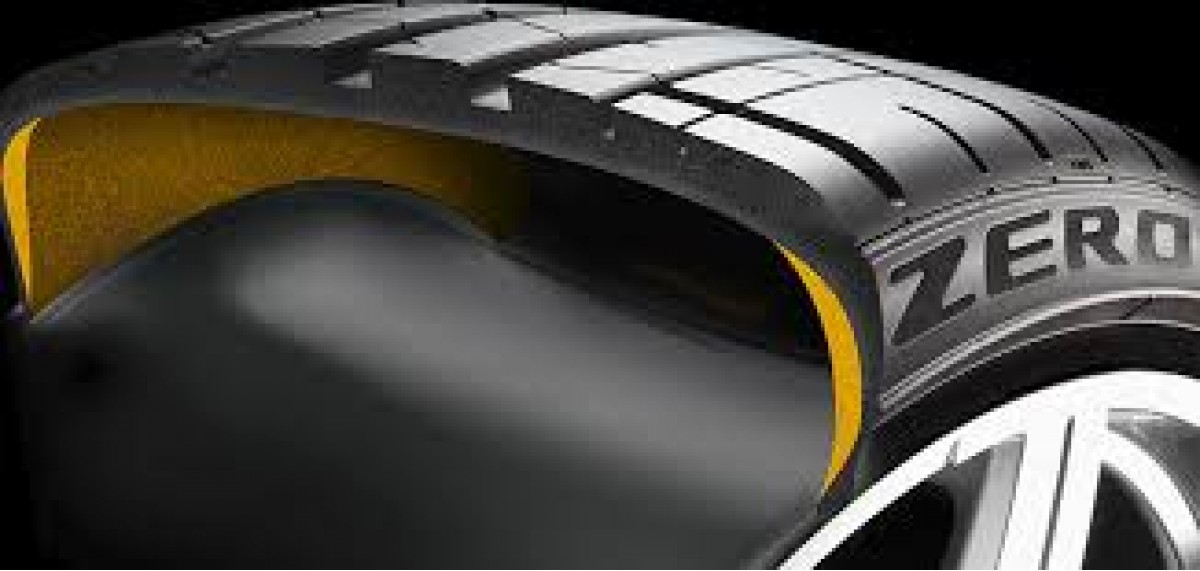
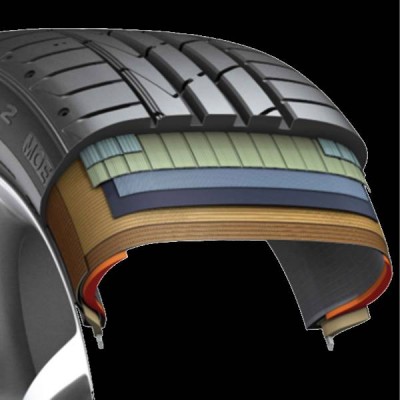
RUN FLAT TIRES
Though they first appeared in the mid-1980s, run flat tires (RFT) are now more popular than ever. With some auto manufacturers making them standard in new vehicles, more consumers are asking about run flats, their advantages, and how using them impacts driving.
WHAT ARE RUN FLAT TIRES?
Run flat tires are tires on which you can continue driving after a puncture so you can take time get to an auto shop or find a safe, level area to change your tire.
You can’t drive on them indefinitely, though. Check the manufacturer’s specifications to find out how fast and how far you can drive on your run flat tires. Bridgestone run-flat tires will allow continued operation even after a loss of some or all inflation pressure for up to 50 miles (80 km) at a maximum speed up to 50 mph (80 km/h.)
There are two primary types of run flat tire systems:
- the self-supporting system and
- the support ring system.
In most self-supporting run flat tire systems, the tire features reinforced sidewall construction that will continue supporting the vehicle in the event of air loss. This construction allows continued operation after the loss of air pressure up to the speed and distance specified by the manufacturer.
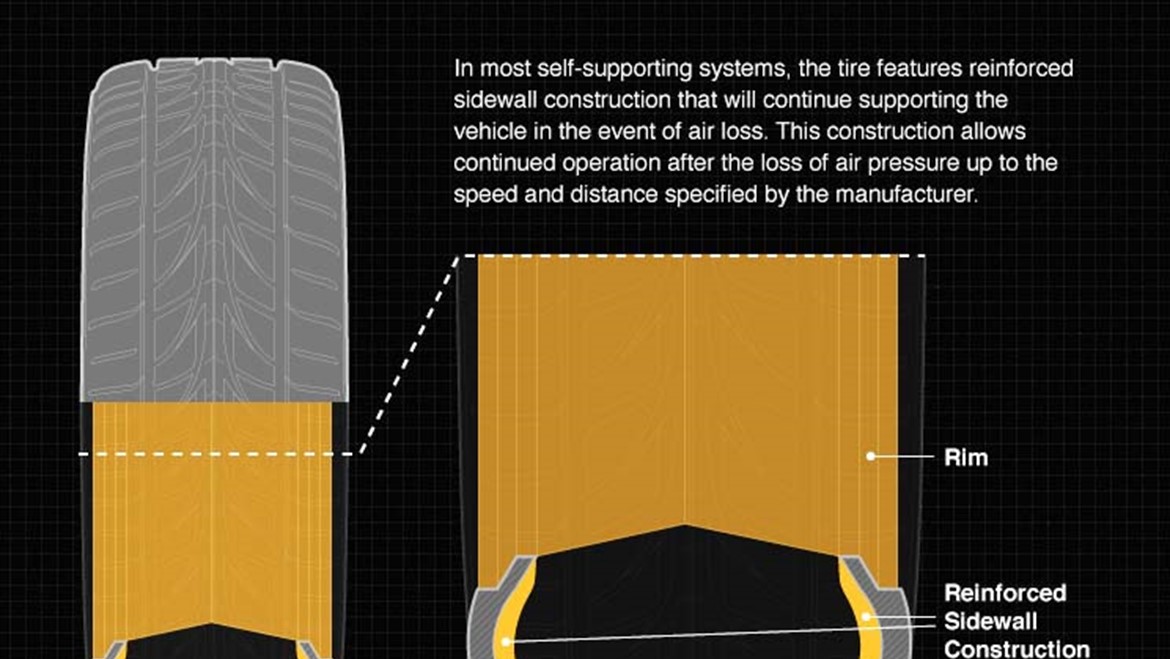
SUPPORT RING SYSTEM
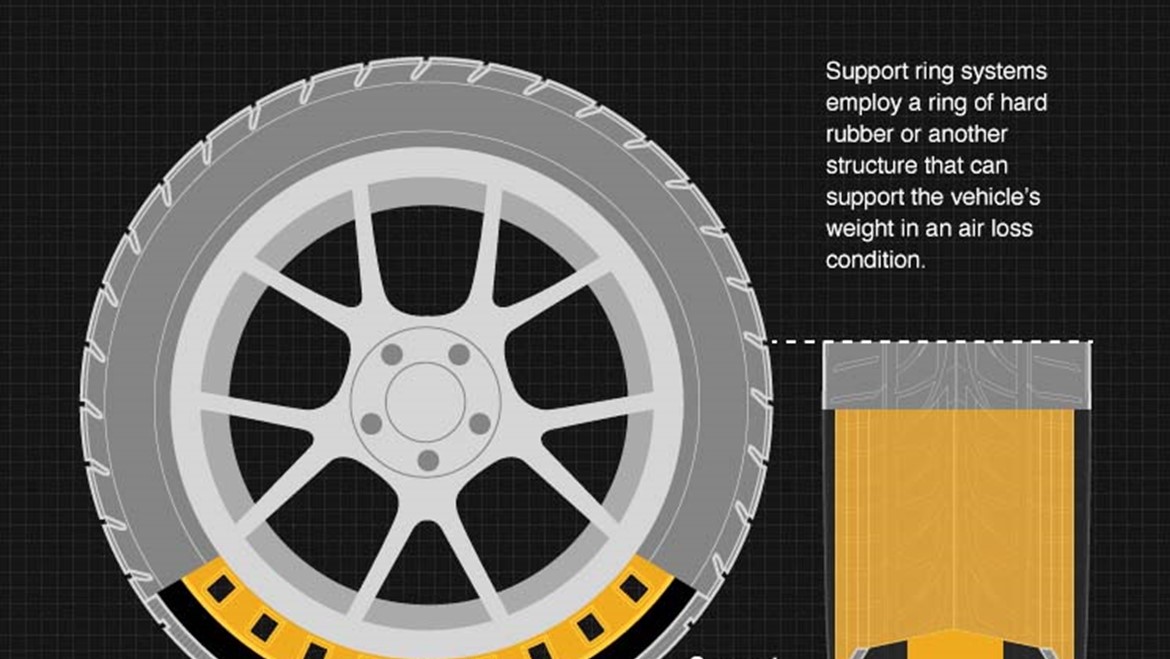
BENEFITS OF RUN FLAT TIRES
- You don’t have to change your tire in dangerous or uncomfortable conditions. This is perhaps the biggest benefit of run flat tires and is the one of the reasons why they were designed. With conventional tires, you have to replace a flat on the spot or have your car towed.
- In a puncture situation, run flats are more stable than conventional tires. Since they’re made to support your vehicle even when they contain no air, run flat tires will help you maintain better control in a complete air loss situation than conventional tires.
As consumers continue rating safety high on the list of features they look for in a vehicle, the popularity of run flat tires is expected to grow. Since run flat tires work reliably with interconnected technologies like TPMS, it may only be a matter of time before they become the norm rather than the exception in new vehicles.
PROS:
- You can drive on a flat tire: The primary benefit of a self-supporting tire is that it allows you to keep driving on a flat about 100 miles after all the air has gone. You don't have to get out of the car in the cold, or the rain, or onto a busy highway or on the street in a sketchy part of town. Drivers will usually have to reduce speed to about 50 mph to get the maximum range. The owner's manual will have exact figures for each tire/vehicle application.
- Better stability after a blowout: Because this tire can support the vehicle for miles without air, a sudden deflation results in less weight transfer and tread destabilization. Steering and handling will remain near normal.
- Lower vehicle weight: With the spare wheel and tire repair tools eliminated, vehicle weight should theoretically go down. But it's not as much as you might expect since run-flats weigh more than regular tires due to the added sidewall reinforcement.
CONS:
- No spare: Vehicles equipped with run-flats do not carry a spare wheel and tire, which means they don't have a jack or tools either. In fact, eliminating the spare tire and reallocating that space to some other purpose (styling, a third-row seat, interior room, etc.) is a big reason why carmakers offer run-flats.
- Reduced tread wear: A 2013 study by J.D. Power found that people replaced their run-flat tires an average of 6,000 miles sooner than owners using conventional tires. Opinions differ on the reason, but one theory is that tiremakers put a soft tread compound on a run-flat tire to counter the hard ride. A side effect of the softer compound is a shorter tread life. Actual data on the longevity of run-flat tires have been hard to find. But according to a 2018 J.D. Power owner survey, owners reported higher overall satisfaction with run-flat tires. They did not lag behind conventional tires in the survey.
- Blowouts are still possible: If a driver fails to heed or notice the warnings and drives beyond the zero-pressure range or above the speed limitation, the tire can begin to disintegrate, with the same destabilizing effects. Additionally, if the puncture occurred on the sidewall or if the tire hits a large object, the driver would have to call a tow truck. The J.D. Power study found that "customers with vehicles equipped with run-flat tires are nearly twice as likely as those with vehicles equipped with conventional tires to have to replace a tire due to a flat or blowout."
- Hard to tell if it is low on air: A side effect of the stiffer construction is that the sidewalls do not bulge if the air pressure is low. Therefore, it is critical to have a tire pressure monitoring system and check your tire pressure frequently. Otherwise, you'd never know you had a flat.
- Harsher ride: The stiff sidewalls that make a run-flat work also result in a harsher ride. If the vehicle came with run-flat tires from the factory, the automaker usually tunes the suspension to offset the harsher ride.
- Cost: Run-flat tires are more expensive to replace. Prices will vary by tire type and purchase location, but it's not uncommon to pay a $40-$65 premium for a run-flat tire. Also, many run-flats cannot be repaired and often need to be replaced in pairs.
- Less on-shelf availability: Because run-flats aren't a big-selling tire, drivers shouldn't expect to roll into just any tire shop and buy one. It may be easier to do so in larger cities, but if you're a run-flat user on a road trip and get a flat near a small town, you'll probably have to make a detour to find a suitable new tire. Or worse, you may have to stay there overnight, waiting for the tire to be shipped.
DIFFERENCES WITH A CONVENTIONAL TIRE
The following diagram shows very well the differences in tire behavior in the face of abrupt loss of air. This behavior is what allows you to continue driving at reduced speeds and for a certain limited time.

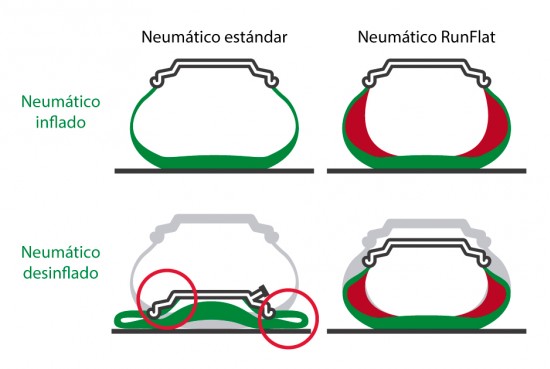
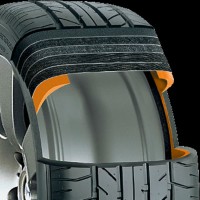
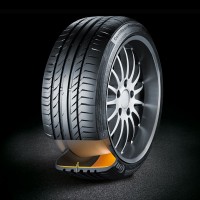
Leave your comment